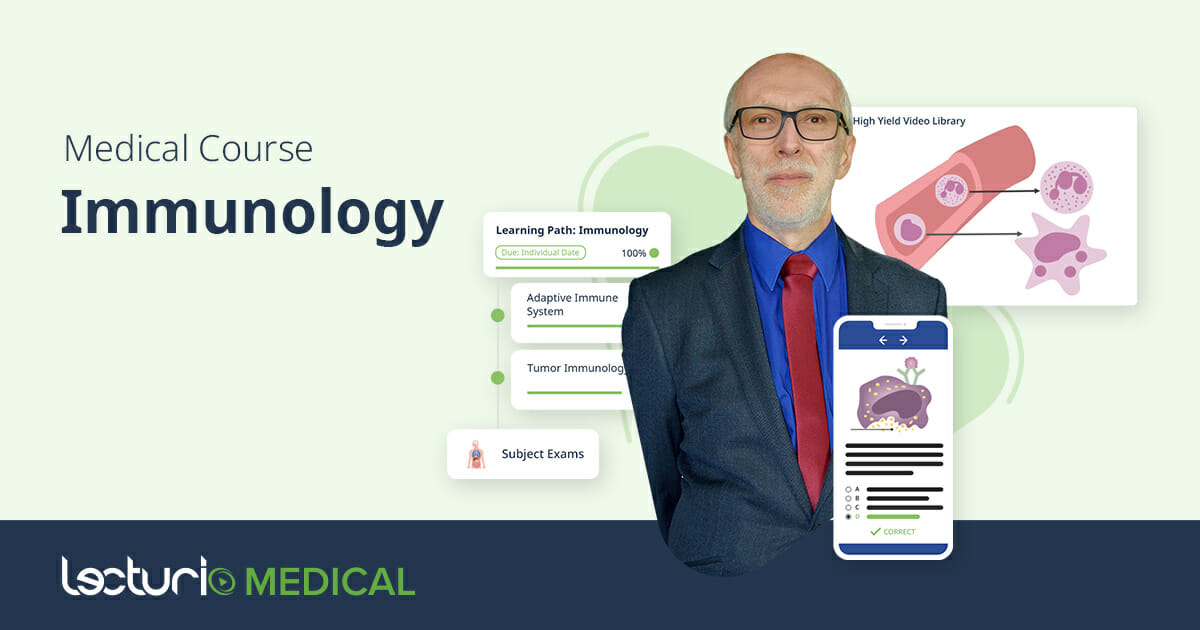#1 Build your Knowledge in Steps
You know in middle school when you would miss a day of math class, come back the next day and nothing seemed to make sense anymore? The same thing can happen with immunology.
This is because in both subjects, the subject matter builds on itself. Just as it would be difficult to learn multiplication if you have not yet mastered addition, the function of antibodies is very confusing if you do not yet know the functions of the different immune cells. This is definitely a subject in which you would be wise to study the material in the order in which it is presented to you.
Once you have a solid foundation, which is likely to be delivered in an “overview” or “introduction to immunology” lecture or handful of lectures, you have set yourself up well to learn the intricacies of the subject.
Additionally, learning the material “in order,” so to speak, will allow you to develop a dynamic understanding of the content. This is important for being able to manipulate what you have learned in order to work through real-life situations- something you will do every day in your future work as a physician.
For example, B cells are generally activated by bacterial infections, and T cells are generally activated by fungal or viral infections. Once you know this tidbit, you can apply it to your understanding of the pathophysiology and treatment options for the various infections you encounter in your studies.
Take the Course: Immunology
Peter Delves, PhD, from the University College of London leads you through immunology from the very basics of the immune system to the details of immunodeficiencies and hypersensitivities.
#2 Visual Aids Are Your Friend
There are A LOT of moving parts in immunology. To further complicate things, these moving parts are microscopic, and many of the key events only happen in vivo (i.e inside the body), so it is not possible to simply watch these processes occur. Therefore, visual aids can help you make sense of what is happening, how different cells function and interact and how each component might move in 2D or 3D space. not logistically feasible to visualize these processes actually happening.
One way to aid in your understanding of immunology is to engage with your visual aid of choice. As is the case with all study techniques, the more actively you can participate in the use of the visual aid, the more likely you will be to remember the information.
Draw it out
I highly recommend drawing out the different cells and processes as you learn about them. It does not matter if the drawings are neat, pretty, or even if they make sense to anyone but yourself. What is important is that you work through the material, and are able to visualize the content that is described to you in a way that can be altered and added to as you acquire more knowledge of the subject.
Engage with video content
If drawing out the processes does not seem appealing to you, videos are a close second when it comes to visual aids. If you are watching videos, in order to maximize the efficiency of your study time, you can engage with the material in a few different ways.
- First, you could take notes on the highlights and, if you’re feeling bold, attempt your own recreation of some of the images depicted in the video.
- Additionally, you could pause the video after each minute or two, and summarize what you have just heard in your head, aloud, or again, via written notes.
- You may also want to watch the video more than once, with each view being for a different purpose. For example, the first time you watch the video may be to get a general overview of the information presented. The second time you watch the video could be to pay closer attention to details. Lastly, the third time you watch the videos could be to clarify or be exposed to concepts you are struggling with after studying the material for some time.
- I also find it particularly beneficial to rewatch videos that I felt I learned a lot from, especially when I am studying closer to an exam. This is helpful for general review of important concepts, and also to help you identify material that you are still having a hard time recalling correctly.
#3 Answer Practice Questions
There are many resources that provide practice questions for immunology and other topics, including Lecturio. Working through practice questions is a great way to practice being in the test-taking mindset, and to evaluate your existing knowledge of the material.
Types of immunology questions
Immunology is a topic that can be tested in many ways, therefore, it is important to become familiar with the types of questions that may be asked on your assessment, and feel confident that you can answer them correctly!
Straightforward recall questions
As long as you know the basic information presented in your introductory immunology lecture, these questions will hopefully be easy points! They are first-order questions that ask a very straightforward question, such as selecting one of the functions of an NK cell or choosing the correct definition of a type II hypersensitivity reaction.
Second-order questions
These questions are very common in complex disciplines such as immunology, as the writers of the test want to know if you have truly mastered the content. These questions provide a bit less context than a straightforward recall question, and often require you to know at least two facts in order to get the answer correctly. For example, to answer the question, “Where are the cells produced that allow the body to recognize self vs. non-self?” you must know that the cells discussed are T cells, and that T cells are produced in the bone marrow.
Clinical scenario-based questions
Many of the questions you will encounter pertaining to immunology will present a patient case and ask about what is happening on a cellular level. For example, you may be asked to choose the pathophysiology underlying Chronic Granulomatous Disease, or how a patient was sensitized to an irritant prior to experiencing contact dermatitis, a type IV hypersensitivity reaction.
Getting the most out of practice questions
To get the most out of practice questions, it is important that you have some level of understanding of the material, and are looking to find your weak spots.
While studying, I highly recommend answering questions in timed mode, especially if you struggle with the amount of time allotted for exams. I also personally find it more helpful to wait until the end of a block of questions to see which questions you answered correctly and which questions you answered incorrectly.
This serves a few purposes. First and foremost, it allows you to focus on the task at hand without having to switch between answering questions and reviewing questions. Task switching is laborious for the mind, and too much task switching can decrease the efficiency of your studying, and may even decrease the amount of time that you are able to focus on studying.
Additionally, if I know I will see whether I got the question correct as soon as I submit my answer, I tend to feel anxious and have a hard time committing to an answer. Many of my peers experience this as well, and I suspect it is simply because of the fact that being wrong does not feel good. Learning that you answered a question incorrectly when you still have more questions to answer can significantly harm your momentum, and may decrease your confidence as you move through the rest of the question block.
Lastly, especially as you approach the date of your exam, it is important to simulate the actual testing environment as much as you can. Of course, it is likely not possible or realistic that you will be sitting in the same place, using the same computer, etc.
But, when you are taking an exam, you don’t get to know the results after answering each question, and often you will have to wait hours to days to get your exam results back. If you get used to the instant gratification of seeing “Correct” or “Incorrect” every time you answer a question, the test-taking process may become even more frustrating or intimidating.





